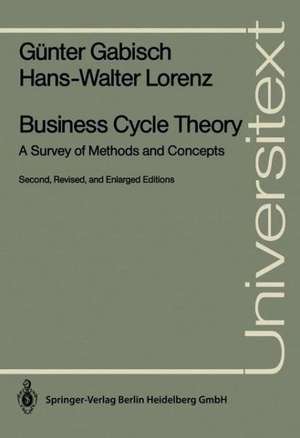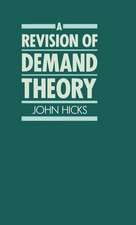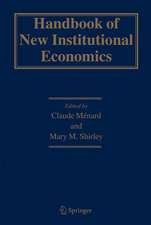Business Cycle Theory: A Survey of Methods and Concepts: Universitext
Autor Günter Gabisch, Hans-Walter Lorenzen Limba Engleză Paperback – 14 apr 1989
Din seria Universitext
- 13%
 Preț: 353.49 lei
Preț: 353.49 lei -
 Preț: 487.96 lei
Preț: 487.96 lei - 15%
 Preț: 543.75 lei
Preț: 543.75 lei -
 Preț: 418.67 lei
Preț: 418.67 lei - 20%
 Preț: 628.22 lei
Preț: 628.22 lei -
 Preț: 322.62 lei
Preț: 322.62 lei - 17%
 Preț: 364.82 lei
Preț: 364.82 lei -
 Preț: 634.38 lei
Preț: 634.38 lei - 17%
 Preț: 427.32 lei
Preț: 427.32 lei - 13%
 Preț: 355.52 lei
Preț: 355.52 lei - 17%
 Preț: 431.50 lei
Preț: 431.50 lei - 19%
 Preț: 429.21 lei
Preț: 429.21 lei - 19%
 Preț: 393.95 lei
Preț: 393.95 lei -
 Preț: 360.08 lei
Preț: 360.08 lei -
 Preț: 358.44 lei
Preț: 358.44 lei - 13%
 Preț: 389.95 lei
Preț: 389.95 lei -
 Preț: 465.61 lei
Preț: 465.61 lei -
 Preț: 371.99 lei
Preț: 371.99 lei - 15%
 Preț: 497.22 lei
Preț: 497.22 lei - 15%
 Preț: 737.46 lei
Preț: 737.46 lei - 17%
 Preț: 394.41 lei
Preț: 394.41 lei - 15%
 Preț: 509.58 lei
Preț: 509.58 lei - 17%
 Preț: 427.68 lei
Preț: 427.68 lei - 8%
 Preț: 495.44 lei
Preț: 495.44 lei - 17%
 Preț: 364.57 lei
Preț: 364.57 lei - 17%
 Preț: 369.08 lei
Preț: 369.08 lei -
 Preț: 396.55 lei
Preț: 396.55 lei - 15%
 Preț: 553.33 lei
Preț: 553.33 lei - 17%
 Preț: 365.35 lei
Preț: 365.35 lei -
 Preț: 356.78 lei
Preț: 356.78 lei -
 Preț: 673.45 lei
Preț: 673.45 lei - 17%
 Preț: 426.76 lei
Preț: 426.76 lei - 20%
 Preț: 569.56 lei
Preț: 569.56 lei -
 Preț: 372.87 lei
Preț: 372.87 lei -
 Preț: 319.07 lei
Preț: 319.07 lei -
 Preț: 379.86 lei
Preț: 379.86 lei -
 Preț: 445.88 lei
Preț: 445.88 lei -
 Preț: 382.36 lei
Preț: 382.36 lei - 15%
 Preț: 533.72 lei
Preț: 533.72 lei - 15%
 Preț: 496.02 lei
Preț: 496.02 lei - 15%
 Preț: 474.82 lei
Preț: 474.82 lei -
 Preț: 389.70 lei
Preț: 389.70 lei -
 Preț: 484.08 lei
Preț: 484.08 lei - 15%
 Preț: 643.48 lei
Preț: 643.48 lei -
 Preț: 415.02 lei
Preț: 415.02 lei - 15%
 Preț: 602.25 lei
Preț: 602.25 lei - 20%
 Preț: 510.24 lei
Preț: 510.24 lei - 15%
 Preț: 588.37 lei
Preț: 588.37 lei -
 Preț: 381.59 lei
Preț: 381.59 lei
Preț: 388.52 lei
Nou
Puncte Express: 583
Preț estimativ în valută:
74.37€ • 80.81$ • 62.51£
74.37€ • 80.81$ • 62.51£
Carte tipărită la comandă
Livrare economică 21 aprilie-05 mai
Preluare comenzi: 021 569.72.76
Specificații
ISBN-13: 9783540510598
ISBN-10: 3540510591
Pagini: 264
Ilustrații: IX, 250 p. 8 illus.
Dimensiuni: 170 x 244 x 14 mm
Greutate: 0.43 kg
Ediția:2nd, rev. and enlarged ed.
Editura: Springer Berlin, Heidelberg
Colecția Springer
Seria Universitext
Locul publicării:Berlin, Heidelberg, Germany
ISBN-10: 3540510591
Pagini: 264
Ilustrații: IX, 250 p. 8 illus.
Dimensiuni: 170 x 244 x 14 mm
Greutate: 0.43 kg
Ediția:2nd, rev. and enlarged ed.
Editura: Springer Berlin, Heidelberg
Colecția Springer
Seria Universitext
Locul publicării:Berlin, Heidelberg, Germany
Public țintă
ResearchCuprins
Preface.- 1. Fluctuations in Major Economic Variables.- 1.1. Periodic Patterns and Stylized Facts.- 1.2. The Measurement of the Business Cycle.- 2. Shock-Dependent Business Cycle Theories.- 2.1. Discrete-Time Shock-Dependent Models.- 2.2. Continuous-Time Shock-Dependent Models.- 2.3. The Kalecki Model and Mixed Difference-Differential Equations.- 2.4. The Relevance of Shock-Dependent Business Cycle Theories.- 3. Business Cycle Theory and Exogenous Shocks.- 3.1. The Political Business Cycle.- 3.2. The Theory of Stochastic Business Cycles.- 3.3. The Rational Expectations Approach to Business Cycles.- 4. Shock-Independent Business Cycle Theorie.- 4.1. A Linear Shock-Independent Growth Cycle Model.- 4.2. Goodwin’s Quasi-Non-Linear Accelerator.- 4.3. Non-Linear Theories of the Cycle.- 5. Complex Motion in Business Cycle Models.- 5.1. Non-Linearities and Chaotic Movements.- 5.2. Catastrophe Theory and Business Cycle Theory.- 5.3. Structural Instability and Business Cycle Theory - Conclusions.- References.- Name Index.














